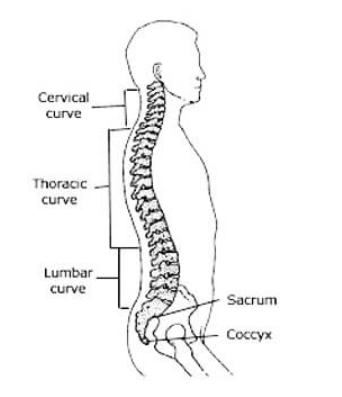How To Keep A Neutral Spine Position To Protect Our Lower Back
Being able to keep a neutral spine position is the best way to protect our lower back throughout the day and while we're exercising. Remember the way to solve lower back pain is to learn how to limit the impact that goes through our spine. Keeping a neutral spine position helps limit the impact goes through our spinal joints, discs, and other structures of our lower back.
A neutral spine is the position where all three curves are in proper alignment. When we lose this alignment by we place more impact on our lower back. Overtime this will lead to pain and dysfunction
How To Find Neutral Spine Position
The easiest way to find is to place a PVC pip along your spine. It should be touching three points: your pelvis/sacrum (NOT your low back), your mid back, and the back of your head. You should have a curve in your lower back and neck. This is your neutral spine position.
How To Keep Your Neutral Spin Position
Once you've found the neutral spine position, it's important to learn how to keep this position as you move throughout your day and your strengthening routine. The following three steps will help.
1. Squeeze Your Glutes
The first step to keeping a neutral spine is to set a solid foundation with our lumbar (lower back curve). One of the most common things we see in the clinic is a person with a rotated pelvis. A pelvis that is rotated forward causes an exaggeration of our lumbar curve. A pelvis that is rotate back work leads to a decrease in our lower back curve. Left for two long, both lead to pain.
A simple glute squeeze will pull your pelvis into it's proper place and set your lumbar curve into it's proper alignment. Learning how to keep your pelvis in this position in key to keeping a neutral spine.
2. Pull Head Back (Chin Tuck)
Many people will find that their head starts to creep forward after long hours of sitting. This causes change to our cervical curve and needs to be corrected. This can be done by simply pulling our head back, or tucking our chin to keep our ears directly over our shoulders. Placing a long PVS pipe on our spine (touching our pelvis, mid back, and back of the head) is a good reminder to keeping this neutral spine position.
3. Brace Your Abs
Now that we've found our neutral spine position, we can learn to keep the position with a light abdominal brace. This will hold our pelvis and spine in position as move through our day and start our strength movements like the hinge, lift, and squat. This squeeze will also prevent any overextension of our lower and mid back, which is common in flexible people.
Learning, understanding, and maintaining the neutral spine is just one of many ways to limit the impact that goes through our lower back and solve pain. For a more complete understanding and answers to low back pain be sure to download our free program ‘Solving Pain With Strength’.



